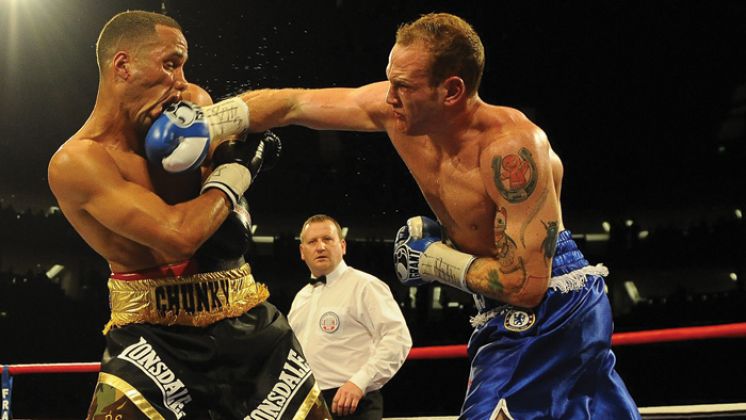
'The groin is a troublesome area for both occasional and serious athletes,’ says Alex Hunter. Hunter is the clinical director at Six Physio and specialises in spinal rehabilitation and sporting injuries, affecting the shoulder, groin and ankle.
‘The groin muscles, or adductors, act to move the leg across the body from the hip, but their main purpose is to stabilise the leg. They have to work harder when you move laterally, as you often do in sports.’
Adductor Strain or Tear
‘This occurs when one of the groin muscles is overloaded and the muscle fibres fail. These are graded from 1-3, ranging from pulled muscle fibres to complete rupture. This can occur suddenly if you play sports with lots of twisting and is often quite painful. Recovery can take up to three months.’
Prevent It
‘Your groin muscles don’t like moving quickly if they’re cold so include a dynamic warm-up before explosive exercise. Don’t do static stretching, which can increase the chance of injury. Instead, simple hip swings, moving your leg both forwards and sideways one at a time for 30 seconds each, can be preventive.’
Gilmore's Groin
‘This condition was first recognised by the surgeon Jerry Gilmore while treating professional footballers in the 70s. It’s essentially disruption of the external oblique abdominal muscles where they attach to the conjoint tendon (near the family jewels). This takes a stable base of support away from the adductor muscles and they become painful.’
Prevent It
Get the Coach Newsletter
Sign up for workout ideas, training advice, reviews of the latest gear and more.
‘Often surgery is required but making sure your oblique muscles are super-strong can help manage the condition. Get into a plank, then transition to a side plank and back again without letting your knees touch the floor. Repeat 20 times on each side for three sets.’
Osteitis Pubis
‘At the centre of the pubic bone (the front bone of the pelvis) is a small disc made of cartilage, and this structure can become inflamed and sore if overloaded. This can happen when strong shearing forces go through it, as with the long jump and hurdles, but more commonly with walking lunges.’
Prevent It
‘Condition your body to these forces with split squats. Start in a lunge position with the heel of your back foot raised. Keep your back upright and slowly rise and lower. Hold dumbbells to increase resistance. Do three sets of ten reps each side on leg days or twice a week in front of the TV.’
Adductor Tendinopathy
‘This painful condition is usually caused by weakness in the hips, core, glutes and adductors. Tendons often don’t heal correctly after injury and because they’re made of thick collagen they don’t like stretching, so it’s really important you don’t try to “stretch it better”.’
Prevent It
‘Use this isometric exercise. Lie on your back with your feet on the floor and knees bent at 90°. Hold a light med ball or football between your knees. Now engage your abs and squeeze the ball firmly for ten to 15 seconds. Repeat this five times. Too easy? Make it harder by raising your glutes into a bridge position.’

Sam Rider is an experienced freelance journalist, specialising in health, fitness and wellness. For over a decade he's reported on Olympic Games, CrossFit Games and World Cups, and quizzed luminaries of elite sport, nutrition and strength and conditioning. Sam is also a REPS level 3 qualified personal trainer, online coach and founder of Your Daily Fix. Sam is also Coach’s designated reviewer of massage guns and fitness mirrors.
